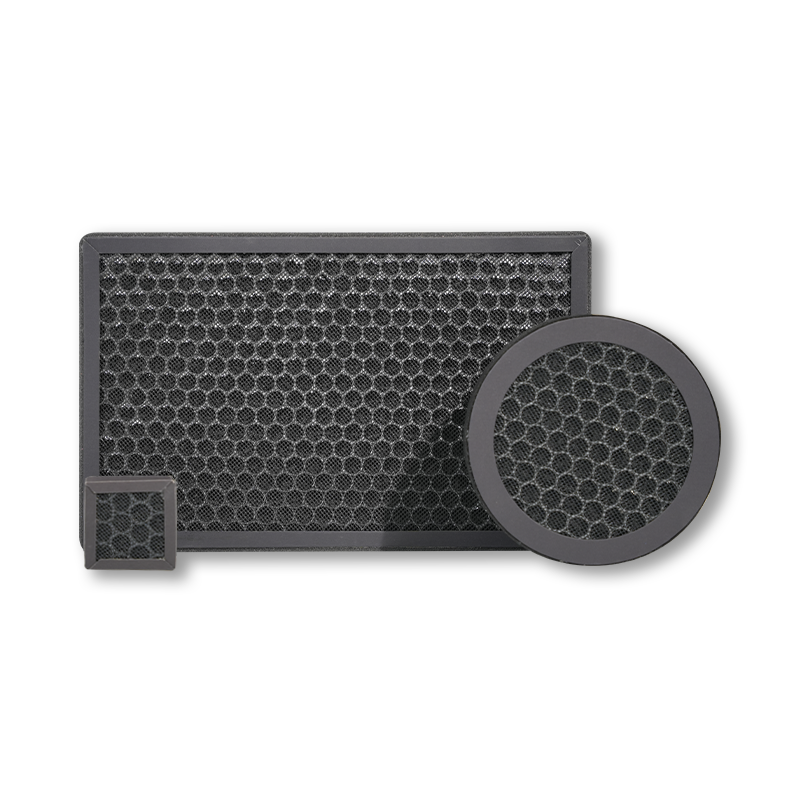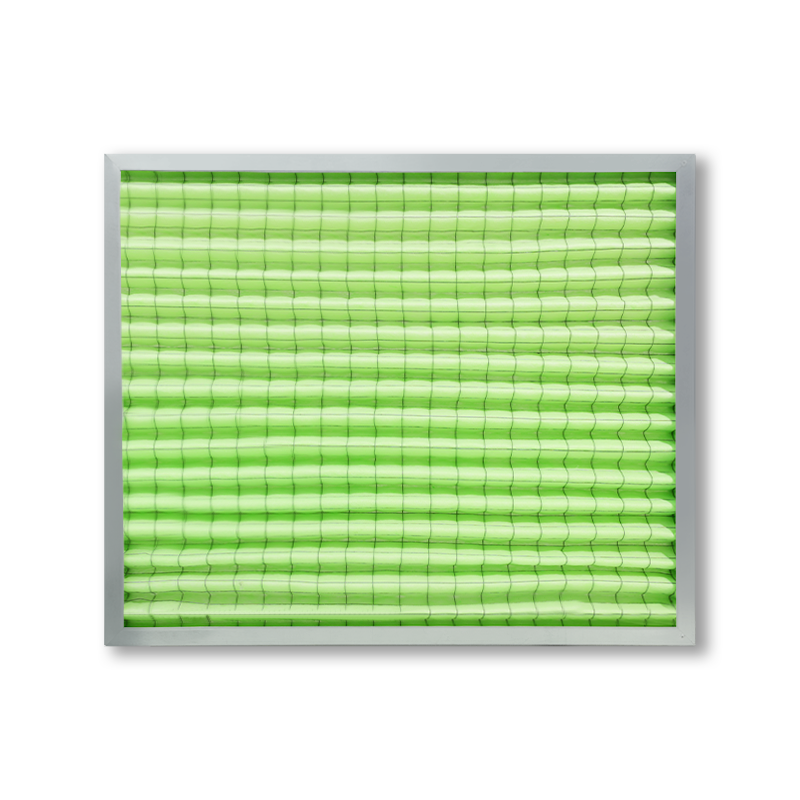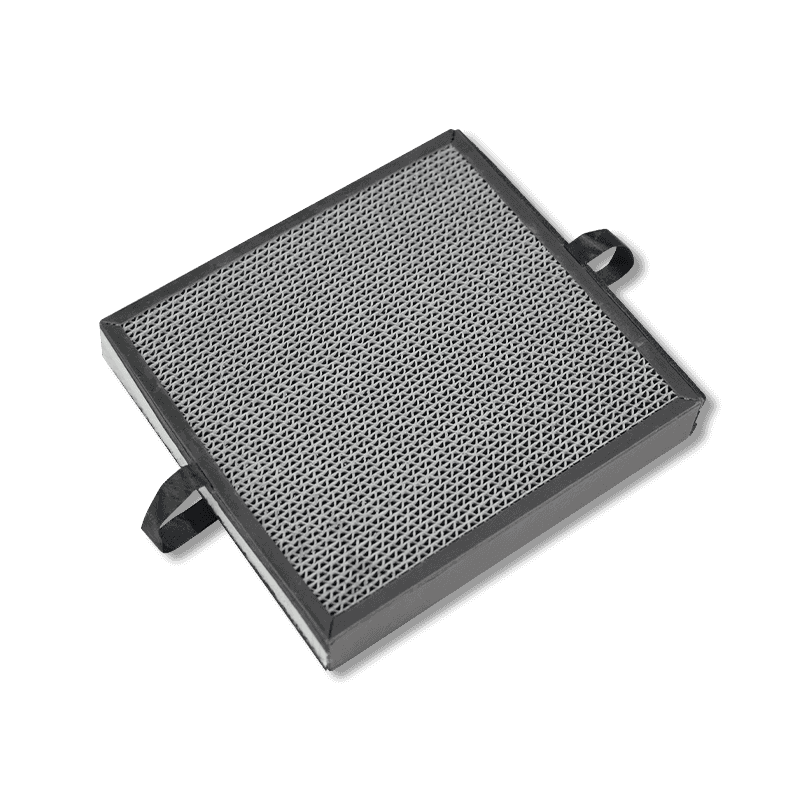Activated carbon filters are a popular choice for air and water purification because of their ability to remove a variety of harmful substances.

Why Choose Activated Carbon Filters?
1. Highly Effective at Removing Odors
Activated carbon is particularly effective at eliminating odors, which are often difficult to get rid of with other filtration methods. This includes common household smells such as cooking odors, pet smells, and smoke. Due to its large surface area, activated carbon traps odor-causing molecules and prevents them from circulating in the air. This makes it especially useful in kitchens, smoking areas, pet areas, and basements, where persistent odors tend to linger. The filter's ability to absorb odors helps maintain a fresh and clean living environment.
2. Removes Harmful Chemicals
Activated carbon filters are excellent at adsorbing a wide range of chemicals that may be present in both the air and water. One of the key pollutants activated carbon targets are volatile organic compounds (VOCs), which are commonly found in household cleaning products, paints, furniture, and building materials. Exposure to these chemicals over time can lead to health issues such as headaches, nausea, dizziness, and long-term respiratory problems. Activated carbon filters adsorb these VOCs, reducing their concentration in the air and minimizing their harmful effects on health.
3. Improves Indoor Air Quality
Indoor air quality can be compromised by pollutants such as allergens, smoke, chemicals, and gases. Activated carbon filters contribute to better air quality by removing a wide range of airborne pollutants, which is particularly beneficial for individuals with respiratory conditions like asthma, bronchitis, or allergies. By removing harmful substances and unpleasant smells, activated carbon helps create a healthier indoor environment. This can also lead to better sleep quality, fewer allergic reactions, and improved overall well-being.
4. Low Maintenance Requirements
Activated carbon filters are relatively low-maintenance compared to other types of filters such as HEPA filters or ultraviolet (UV) sterilizers. Once installed, they can be used effectively for a period of time before needing to be replaced. The need for periodic replacement is usually based on how much air or water has passed through the filter, and they are easy to install and replace. This convenience makes them a cost-effective and user-friendly option for home and office use.
5. Broad-Spectrum Filtration Capabilities
Activated carbon filters are versatile and capable of handling a wide variety of contaminants. This makes them ideal for a broad range of applications, from air purifiers to water filtration systems. They are especially beneficial in environments where multiple contaminants are present, as they can tackle a variety of pollutants simultaneously. Whether it’s removing particulate matter from the air or chemicals from drinking water, activated carbon provides a comprehensive filtration solution.
Harmful Substances Activated Carbon Removes
1. Volatile Organic Compounds (VOCs)
VOCs are chemicals that easily vaporize at room temperature and are commonly found in household products such as cleaning agents, paints, adhesives, and furniture. These compounds include formaldehyde, benzene, toluene, xylene, and acetone, which are known to be harmful to human health. Prolonged exposure to VOCs can lead to respiratory issues, headaches, eye irritation, and even more severe long-term effects like cancer. Activated carbon filters are highly effective in adsorbing VOCs, significantly reducing their presence in the indoor environment and helping to protect residents from these toxic chemicals.

2. Odors and Harmful Gases
Activated carbon filters are known for their ability to remove a wide variety of odors and gases. Common household odors, such as those caused by cooking, pets, and smoke, can be removed by activated carbon, which adsorbs the odor molecules into its pores. In addition to odors, activated carbon can also trap harmful gases like hydrogen sulfide and ammonia, which are released from decomposing organic materials or certain cleaning chemicals. Reducing these gases not only improves air quality but also prevents unpleasant smells from lingering in the home.
3. Chlorine and Chloramines
In water filtration, activated carbon plays a vital role in removing chlorine and chloramines, two chemicals commonly used by municipalities to disinfect tap water. While chlorine is effective at killing harmful microorganisms, it can also affect the taste and odor of water and cause irritation to the skin and eyes. Chloramine, a combination of chlorine and ammonia, is even more resistant to removal and can have a lasting impact on water quality. Activated carbon is highly effective at removing both of these chemicals, improving the taste and smell of drinking water and ensuring a more pleasant and healthier experience.
4. Heavy Metals
Certain types of activated carbon are capable of adsorbing heavy metals such as lead, mercury, arsenic, and cadmium, which may be present in contaminated water. These metals are toxic to human health and can cause a range of issues, from neurological problems to kidney damage and cancer. Although activated carbon is not as effective for removing all heavy metals, it can significantly reduce the concentration of metals like lead, which is particularly important for households with old plumbing systems that may contain lead pipes. For comprehensive heavy metal removal, some filters combine activated carbon with other filtration technologies.
5. Organic Compounds
Activated carbon is highly effective at removing a wide range of organic contaminants from both air and water. This includes industrial chemicals, solvents, petroleum products, and certain pharmaceutical residues. Many organic compounds are volatile and can pose risks to human health if inhaled or ingested over time. Activated carbon adsorbs these compounds, preventing them from circulating in the air or remaining in water. In industrial settings, this type of filtration is critical for reducing exposure to hazardous chemicals.

 English
English Español
Español 日本語
日本語











